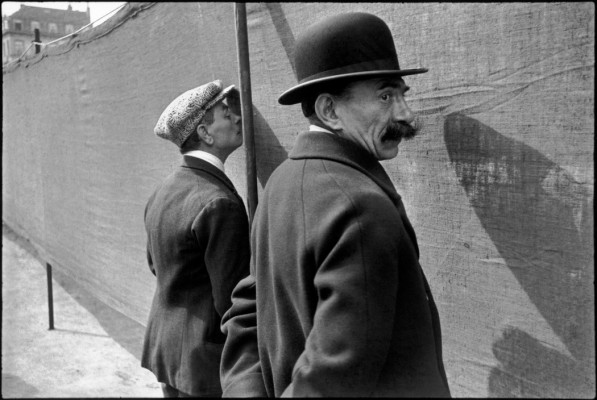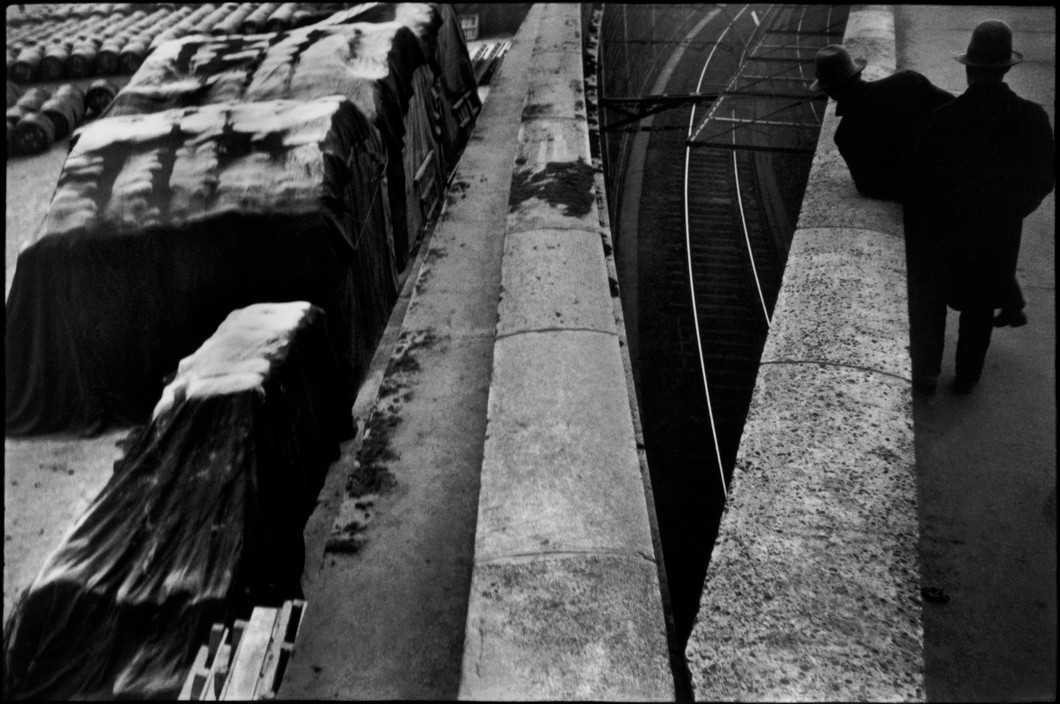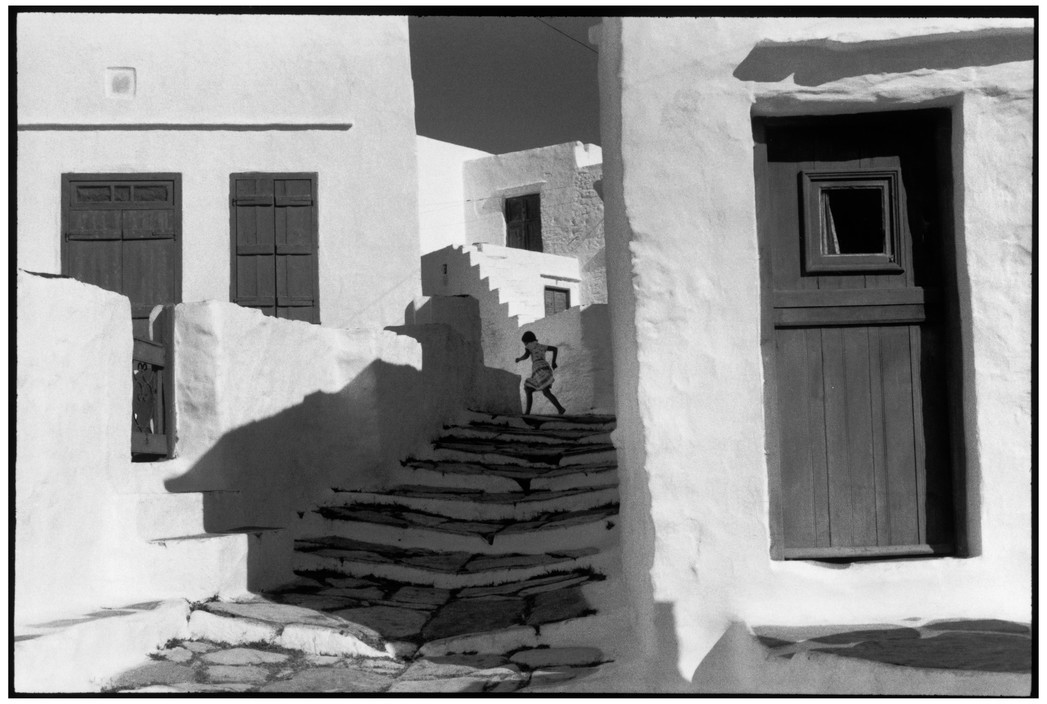







Henri Cartier-Bresson is credited with a famous photographic technique, the “decisive moment,” though it is relatively misunderstood. This moment is often interpreted as when the photographer clicks the shutter button, and everything comes together. However, the actual idea of this moment is working the scene, being intuitive about when to take the picture, and visualizing what the image should be. His works’ moments tend to be instances with mystery, humor, and meaning, an instant where the world falls into place.
His photograph, “Place de l’Europe Gare Saint Lazare,” 1932, is the visual representation of what most photographers refer to when thinking of the “decisive moment.” The image of a man suspended in mid-air about to strike a large puddle is the “decisive moment.” The importance of the image is the anticipation of the action that would be inevitable but has not yet occurred. The misunderstanding of the “decisive moment” would consider only that element creating this peak moment. But it is the motion of the actual figure leaping in the air combined with the dancer leaping behind him in the Railowsky circus advertisement.

Another photograph, Hyères, 1932, is also widely used as a descriptor for the “decisive moment.” A misconception of these moments is they are entirely happenstance and spontaneous. This famous photograph’s “decisive moment” is the bicycle’s motion. Cartier-Bresson perched on top of these stairs to be able to capture a moment that he could visualize in his head and waited for that moment to happen. He was enraptured by the geometry of the stairs that broke up the space; he just needed something to fill the blank space, and that was the moment.
